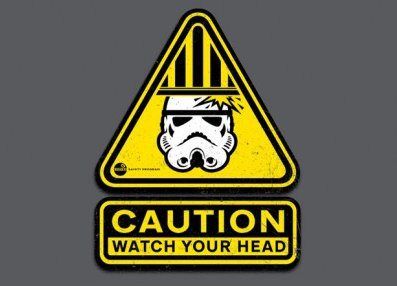
It has been reported that Foodles Production Company has been fined £1.6m for the health and safety breach following Harrison Ford’s injury on the set of Star Wars: The Force Awakens in 2014.
This is the sort of figure to make directors and shareholders of companies shudder. And it is designed to make you shudder – on any assessment, the sentence was designed to send the message that health and safety must be taken more seriously.
So how are these fines arrived at?
Health and Safety offences are sentenced in accordance with the Definitive Sentencing Guideline issued by the Sentencing Council. The Guidelines are based on a mixture of Court of Appeal decisions, public consultations, and public policy considerations. They are available for anyone to read, although it must be said they are not always as clear as they might be.
The “sentencing range” for health and safety breaches is £50 to £10million. In order to decide how much to fine, the court must consider the following factors:
- The company’s culpability, or blameworthiness. This is deemed to be “very high” where there is a deliberate breach or flagrant disregard for the law, or “low’ where the failings were minor and occurred as an isolated incident. Anything in between might be “high” or “medium”.
- The harm caused. This is according to a complicated risk matrix that ranges from death to minor injury on one axis, and highly likely to most unlikely on the other.
- The turnover of the company. There are four categories here: large (turnover of £50m and over), medium (£10m – £50m), small (£2m – £10m), and micro (not more than £2m).
- These factors are fed into another chart, which tells the court the starting point for a fine, as well as the sentencing ranges.
What this means is that a large company that has committed an offence involving low culpability and low harm, might be fined £10,000. A micro company guilty of an offence involving very high culpability and death might be fined £250,000.
The court would also have to consider other factors, such as the actual profitability of the company, the steps it has taken to address the problem since the accident occurred, and any other relevant mitigation.
There are then, any number of variables that could dramatically affect the fine imposed, and therefore the profitability and viability of the offending company. It is vital that these factors are properly presented at court, and preferably in interviews conducted by the Health and Safety Executive when they are investigating the offence, long before it reaches court.
It is wise to take early legal advice to ensure that the company’s mitigation is presented appropriately.
For more information on all Health & Safety, and business defence matters, email info@reganpeggs.com, or call 0121 201 3765.
- UK Motoring Offence Stats: A Closer Look at the Numbers - October 26, 2023
- Are Sat Navs Excuses for Motoring Offences? - October 4, 2023
- Is divorce always 50/50? - August 2, 2023

